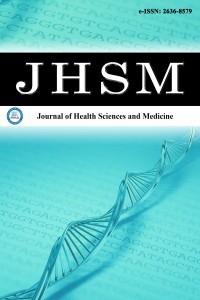
Journal of Health Sciences and Medicine
Yazarlar: Mehmet ZENGIN, Merve ERYOL, Merva AYDEMİR AKKAYA, Mahi BALCI, Selim YALÇIN, Devrim TUĞLU
Konular:Sağlık Bilimleri ve Hizmetleri
DOI:10.32322/jhsm.758558
Anahtar Kelimeler:Grade-group system,Gleason scoring,Prostate cancer
Özet: Aim: Prostate cancer (PC) is the most common malignant tumour in men. The most widely used histological grading scheme for PC is Gleason scoring (GS). After the original, this system has been modified several times. In this study, we retrospectively investigated the new Grade-Group system (GGS). Methods: This study includes 486 cases diagnosed with PC between 2000 and 2015. All cases were re-grouped for the new GGS system and its relationship with prognosis was examined. Results: GGS subgroups had a statistically significant relationship between prognostic factors and this relationship was more significant between GGS 2 and GGS 3 [tumor status (p <0.001), age (p = 0.045), PN invasion (p <0.001), stage (p = 0.004), and LN status (p <0.001)]. In univariable survival analysis, there was a significant difference between GGS subgroups (for GGS 2-GGS 3, RFS: p = 0.035 and OS: p = 0.012; for GGS 4-GGS 5, RFS: p = 0.001 and OS: p = 0.001). In multivariable survival analysis, GGS subgroups were found to be an independent survival parameter for PC (for GGS 2-GGS 3, OS: HR = 2.56, p = 0.012 and RFS: HR = 2.69, p = 0.038; for GGS 4-GGS 5, OS: HR = 2.84, p = 0.011 and RFS: HR = 2.59, p < 0.001). Conclusions: According to our results, the new GGS performs the prognostic risk grading more accurately than the old classification. Also, the fact that this system contains fewer categories and is simpler has increased the interobserver compatibility. Keywords: Grade-group system, Gleason scoring, prostate cancer. ÖZ Amaç: Prostat kanseri (PK) erkeklerdesık görülen malign tümördür. PK içinyaygın kullanılan histolojik derecelendirme şeması Gleason skorlamasıdır (GS). Orijinalinden sonra bu sistem birkaç kez değiştirildi. Bu çalışmada, PK için tanımlanan yeni Grade-Group sistemini (GGS) geriye dönük olarak inceledik. Yöntemler: Bu çalışma 2000-2015 yılları arasında PK tanısı konmuş 486 vakayı içermektedir. Tüm olgular yeni GGS sistemi için yeniden gruplandırıldı ve prognozla ilişkisi incelendi. Bulgular: GGS alt gruplarının prognostik faktörler arasında istatistiksel olarak anlamlı bir ilişki vardı ve bu ilişki GGS 2 ve GGS 3 arasında daha anlamlı idi [tümör durumu (p <0.001), yaş (p = 0.045), PN invazyonu (p <0.001), evre (p = 0.004), ve LN durumu (p <0.001)]. Tek değişkenli sağkalım analizinde GGS alt grupları arasında anlamlı bir fark vardı (GGS 2-GGS 3, RFS: p = 0.035 ve OS: p = 0.012; GGS 4-GGS 5, RFS için: p = 0.001 ve OS: p = 0.001). Çok değişkenli sağkalım analizinde GGS alt gruplarının PK için bağımsız bir sağkalım parametresi olduğu bulundu (GGS 2-GGS 3, OS: HR = 2.56, p = 0.012 ve RFS: HR = 2.69, p = 0.038; GGS 4- için GGS 5, OS: HR = 2.84, p = 0.011 ve RFS: HR = 2.59, p <0.001). Sonuçlar: Çalışmamıza göre, yeni GGS sistemi prognostik risk sınıflandırmasını eski sınıflandırmadan daha doğru bir şekilde gerçekleştirmektedir. Ayrıca, bu sistemin daha az kategori içermesi ve daha basit olması, gözlemciler arası uyumluluğu artırdı. Anahtar Kelimeler: Grade-grup sistemi, gleason skorlaması, prostat kanseri.